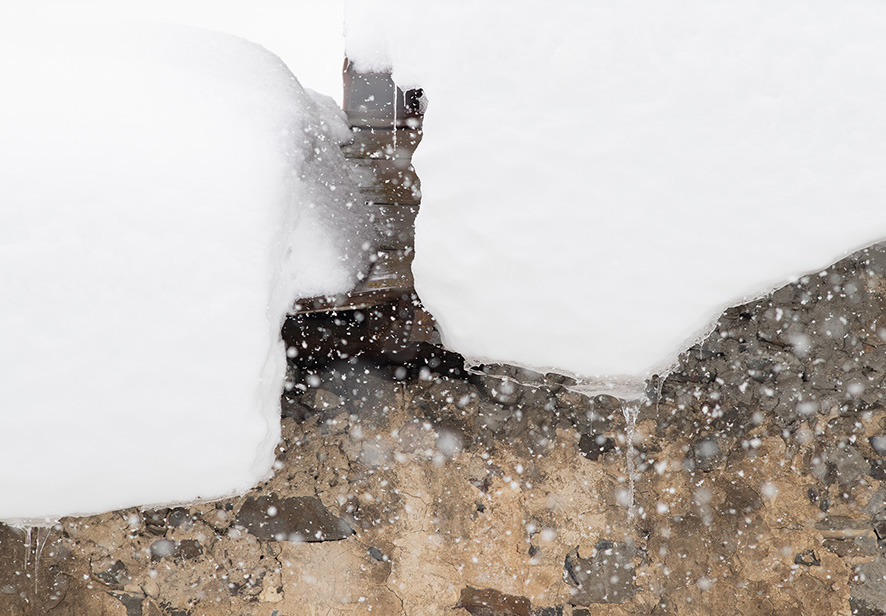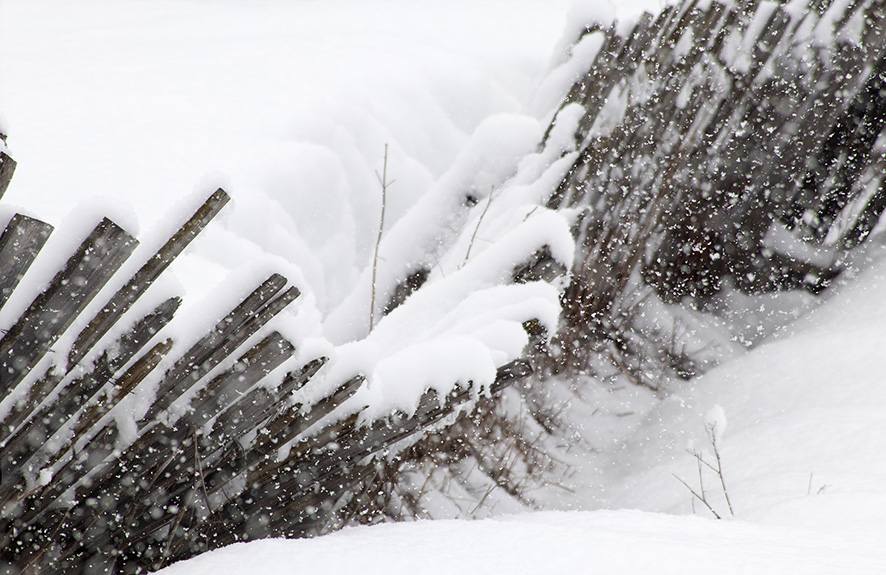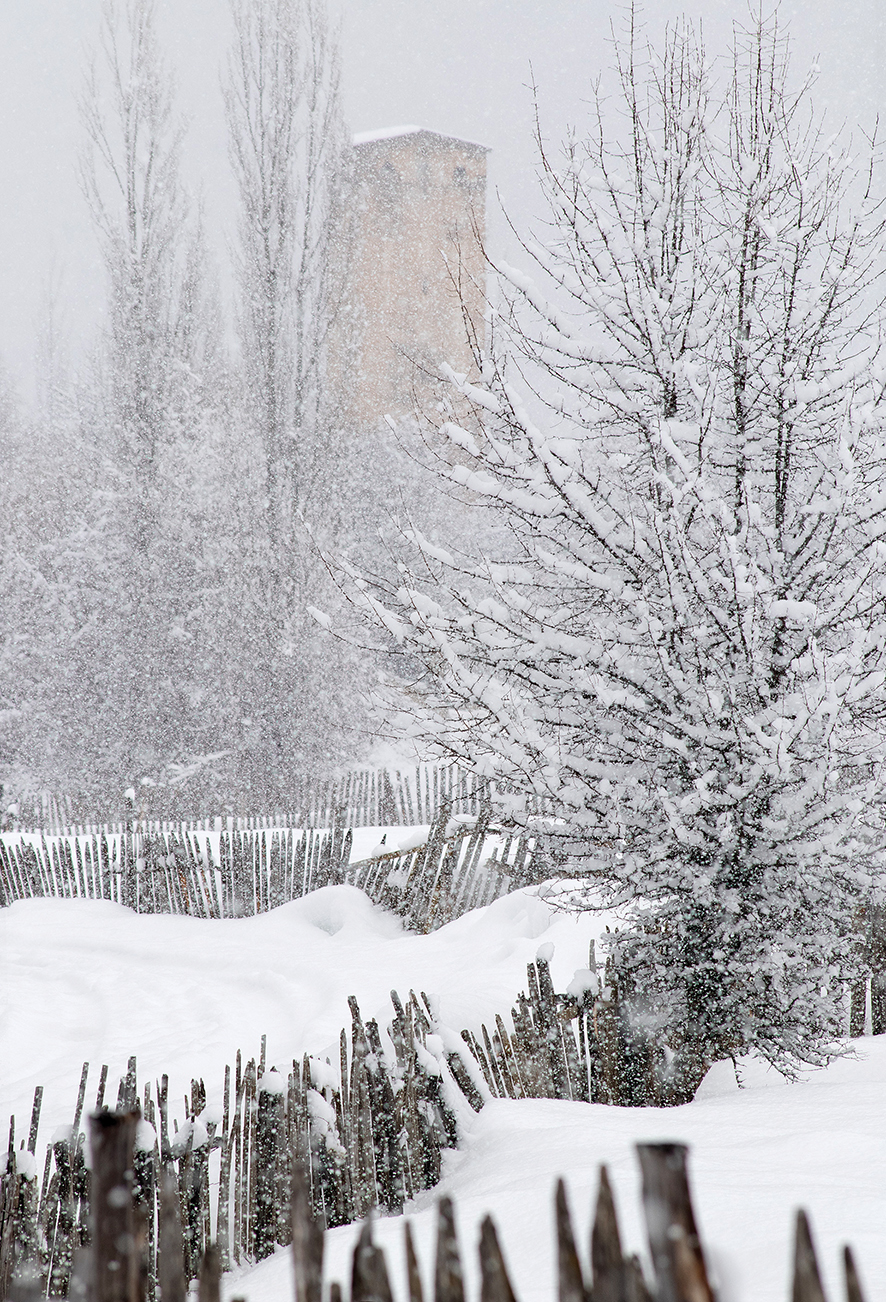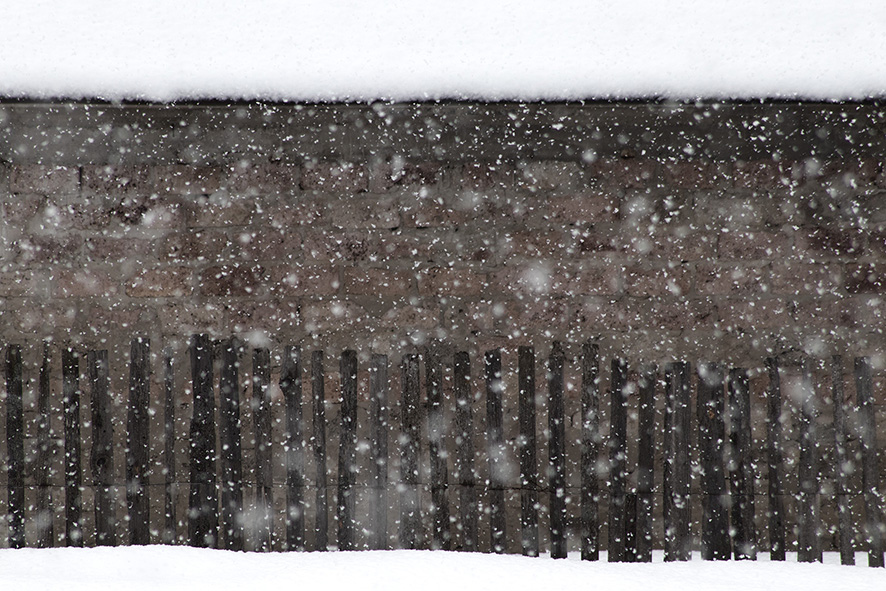Authority on photography Ansel Adams described good landscape work as giving people what they think they’ll see, in an image. Not reality, exactly, but what they imagine it to be. In monochrome work, blue skies a suitably dark shade of gray, for example; not the washed-out near-white a typical shot on film might give you. Use an orange or even red filter if you have to, he would say, to darken those skies to a tone more fitting of “sky blue in black and white.”
This idea was running through my mind on February 16 as new snow was bucketing down in Etseri, Svaneti, where I have been for a couple of weeks now, hosting a team of volunteers to help villagers with snow removal, woodcutting and more. I went out in the snowfall, camera wrapped in a plastic bag, to see what images would call out to me.

I have shot much of what I saw today, walking around in snow along our road’s wonderfully irregular wooden slat fences and gurgling stream. But today I really wanted to capture the feel of the large, soft flakes floating down, in a dramatic way, through the silence.
So I worked like this. See a scene to capture. Take the camera from its bag; focus using autofocus. Switch to manual focus (so autofocus stops trying to change at all); recompose the frame. Shoot from 5 to 12 frames, moving the camera as little as possible (you could put it on a tripod, but I didn’t feel like lugging one around this time. I opted instead to crop out the edge bits where my stack of images didn’t quite line up). Each frame in the set will show the same scene, but with different snowflakes moving through it: some far away and point like, others closer and out of focus.

On the computer, open each stack of images of that scene together, aligned. Choose Lighten as their interaction mode. This ensures that only the parts of each image which are lighter than average (the snowflakes) will be added to the whole scene which emerges from this stack.
Why depict so many snowflakes together, instead of just those captured in a single frame? It’s all about what the witnessing eye remembers having seen, or what another person expects to see: Lots of snowflakes coming down, as they eye moves around the dynamic scene and notices so many of them. THIS is what I saw (or expected to see)! It was quite a dump of snow, not a sprinkle; more is expected. So I was re-shooting familiar scenes of fences and snow and trees, and old house roofs and walls, with the addition of these random white visitors shooting through and making everything magical, different from the way it usually looks; dramatically so.

The irony is that most adults here hate having so much snow coming, as winter considers retreating but decides not to. The children love it: more skiing and other seasonal sports! But their parents anticipate much more shoveling. I get it.
But I’m with the children, delighting in the beauty and how it transforms everything. I can’t help it; this is who I am and am glad to be, childhood wonder unsurrendered. May it always be so.

Blog by Tony Hanmer
Tony Hanmer has lived in Georgia since 1999, in Svaneti since 2007, and been a weekly writer and photographer for GT since early 2011. He runs the “Svaneti Renaissance” Facebook group, now with over 2000 members, at www.facebook.com/groups/SvanetiRenaissance/
He and his wife also run their own guest house in Etseri: www.facebook.com/hanmer.house.svaneti














